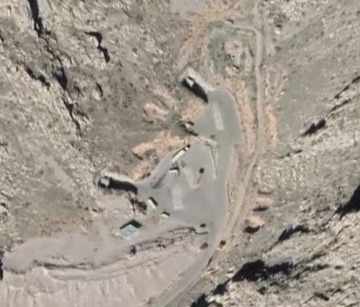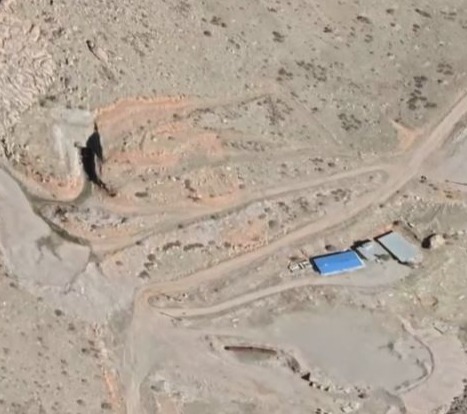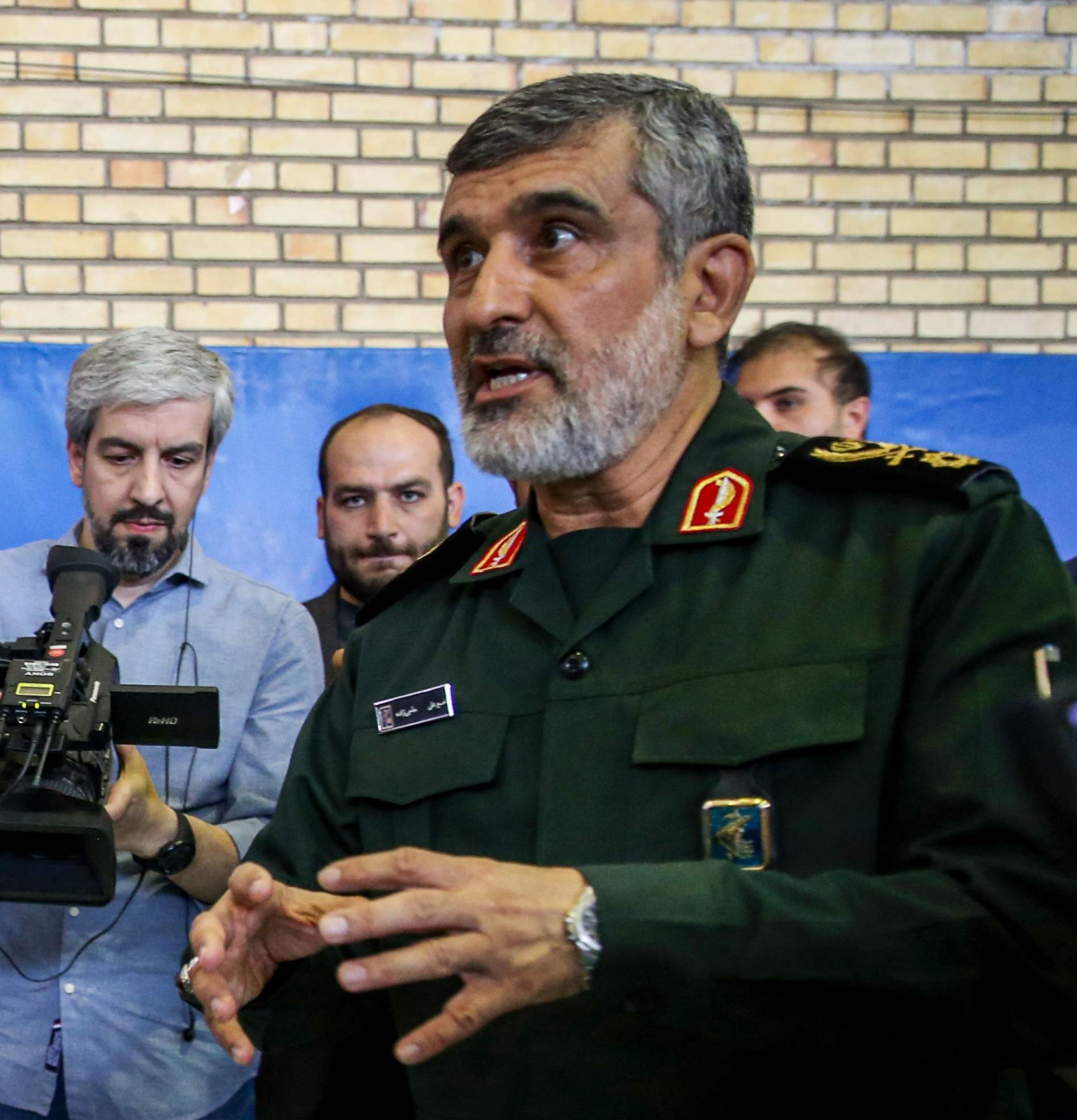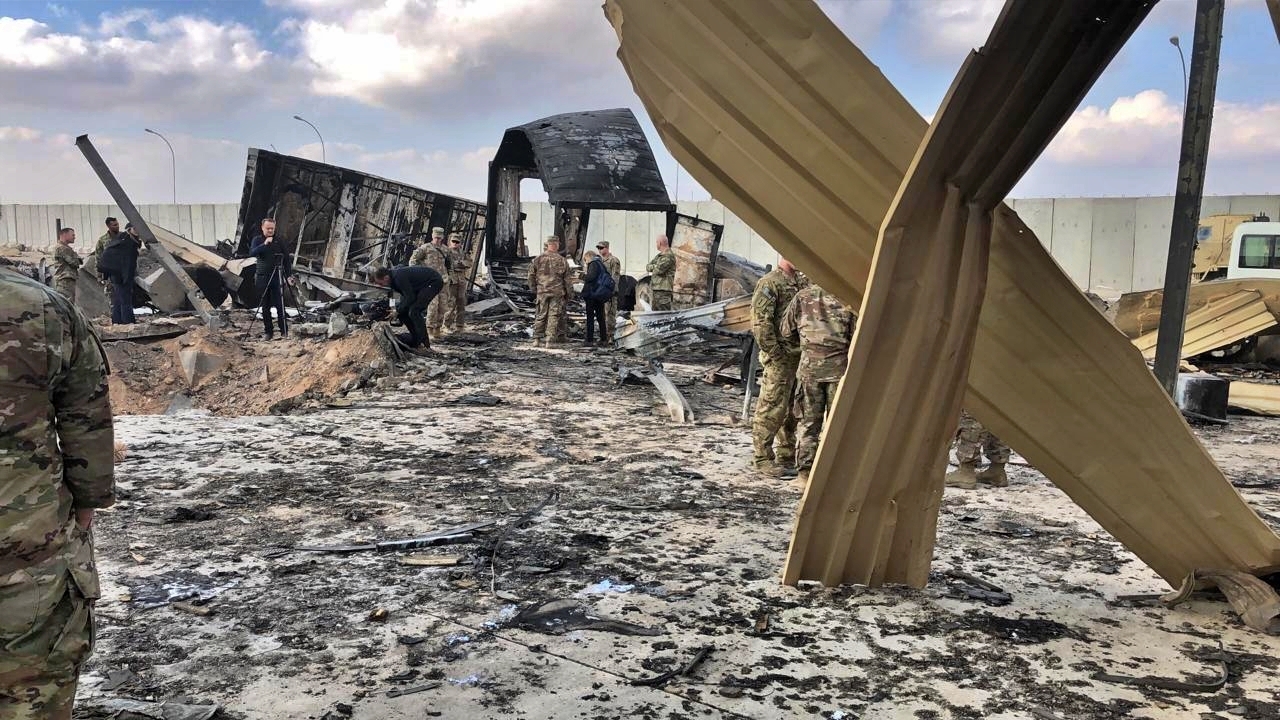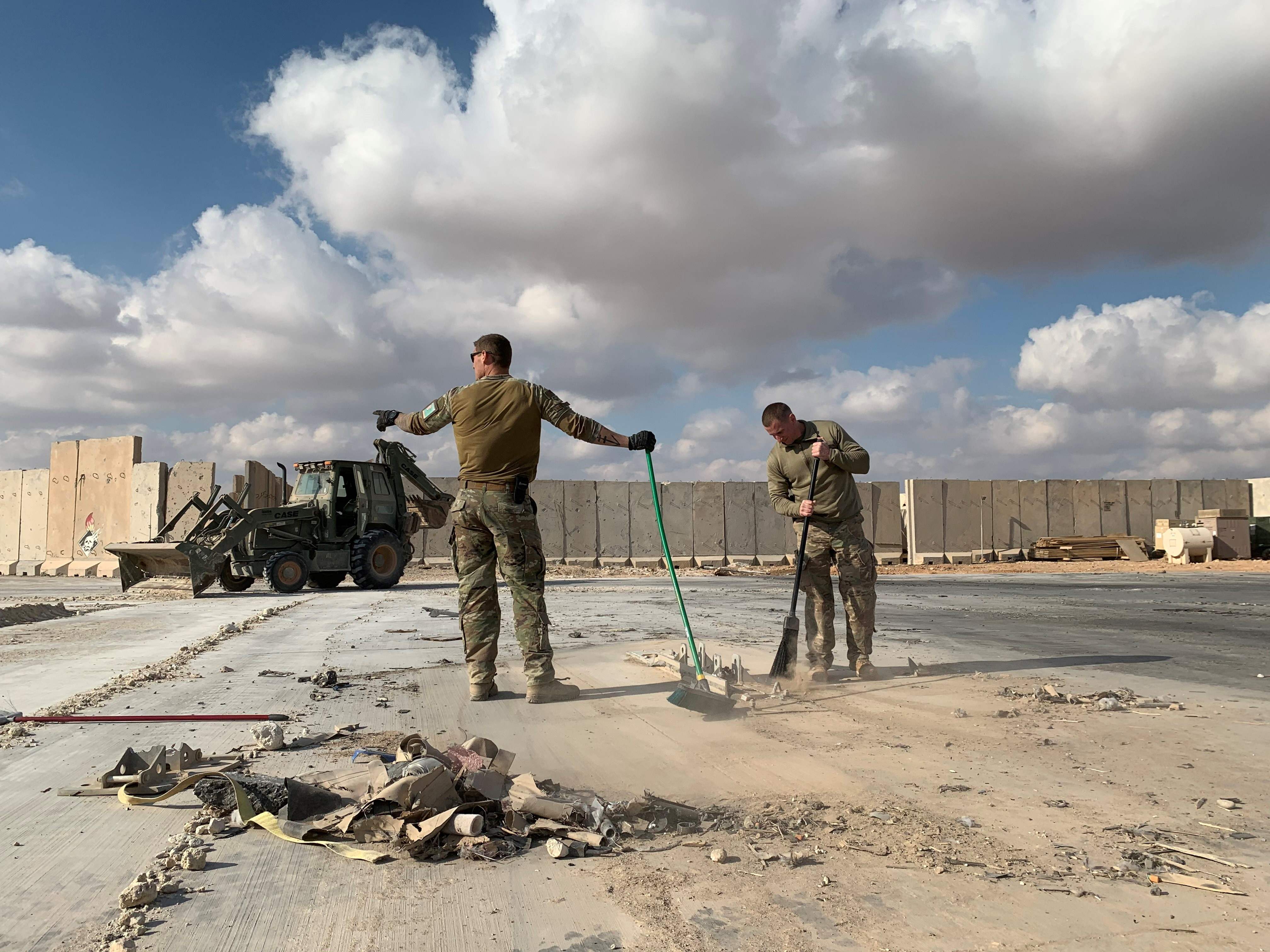
TWO top secret Iranian missile bases which were allegedly used to launch strikes on US bases have been pictured in satellite photos.
The Sun Online got a first look at the revelations which were presented this afternoon by Iranian dissidents as tensions simmer between Tehran and Washington.
Satellite photos show the two alleged sites operated by the Iranian Revolutionary Guard Corps (IRGC) at Kenesht Canyon and Panj Pelleh.
It is alleged the two missile bases close to the city of Kermanshah in western Iran are linked by a sprawling network of tunnels beneath a mountain.
Pictures allegedly show the guarded complexes with visible tunnels burrowing into hillsides - which are claimed to part of one of Iran's infamous "missile cities".
NCRI officials told The Sun Online there are likely to be "hundreds" of missiles at the two sites.
The so-called cities are actually gigantic underground bases which are used to store and conceal missiles while they buried up to beneath up to five layers of concrete designed to fend of enemy strikes.
Mobile missile launcher trucks are believed to be kept in the tunnels - ready to be rolled out to launch their devastating weapons before being swiftly hidden again.
The National Council of Resistance of Iran - a dissident group in exile which advocates regime change - claim the Kenesht Canyon and Panj Pelleh were used to launch strikes on the US military at two bases in Iraq last January.
The dissidents described Panj Pelleh as one of the "oldest and most important missile centers" for the IRGC.
It alleges IRGC commander Brigadier General Amir Ali Hajizadeh, the top ranking office of Iran's missile corps, was stationed at Panj Pelleh personally oversaw the operation.
Based in France and labelled a terrorist organisation by Iran, the NCRI maintains a network of insiders within the state's borders - and has previously been responsible for exposing Iranian nuclear sites.
More than 110 personnel were hurt in the attack last year - dubbed Operation Martyr Soleimani - with some suffering "traumatic brain injuries".
It is estimated around 15 missiles were launched from inside Iran - flying around 300miles before raining devastation down on the US forces at Ayan al-Asad Airbase and Erbil Airbase.
The attacked was Iran's response to the killing of IRGC general Qasem Soleimani, who was blown up by a drone strike just days earlier on orders from US President Donald Trump.
Kenesht Canyon is the larger of the two bases and the NCRI claim it provides a "strategic spot" for launching missiles and storing weapons.
It is claimed to have been expanded in 2020 and is under heavy guard, with soldiers on site rotated every two months to prevent any information leaks.
Five hatches are located on the site which are believed to be used to access the underground tunnel complex.
And there are two large entrances which appear to be large enough for missile launchers to come and go from.
Panj Pellah meanwhile is believed to be a mainly underground complex while spans approximately two miles - and is hidden in a mountainous area.
Two tunnels can be seen in satellite images going into the mountainside - and all these are believed to be connected to the nearby Kenesht Canyon base.
Who was Qasem Soleimani?

MORE than one year ago Iranian major general Qasem Soleimani was blown up in an airstrike by the US.
Soleimani, 62, spearheaded Iran's military operations in the Middle East as head of the country's elite Quds Force - a wing of the IRGC.
He was considered to be one of the most powerful figures in the country, masterminding Iranian intelligence and military operations abroad.
Outside of war-games he was considered to be even more pivotal, with commentators saying he was the second most powerful man in Iran.
He is thought to have directly reported to Ali Khamenei, Iran's Supreme Leader.
He was killed at Baghdad airport by a US air strike, personally approved by Donald Trump on January 3, 2020.
Two missiles fired from a MQ9 Reaper drone struck Soleimani after he disembarked from an aircraft at Baghdad airport.
The Pentagon justified the assassination, saying General Soleimani was "actively developing plans to attack American diplomats and service members in Iraq and throughout the region".
His death put both Iran and the US at each others throat, tensions which persist and have begun to inflame again around the anniversary.
Soleimani's replacement Esmail Qaani has openly called for "revenge", and judiciary chief Ebrahim Raisi has said even Trump is not "immune from justice".
NCRI official Ali Safavi told The Sun Online: "For the mullahs' regime, the ballistic missile program is a strategic lever of survival, and for this reason, the project has continued uninterruptedly at the cost of billions over the past three decades.
"Missile programs, nuclear weapons, and meddling in the region's countries are part of a single policy, which is the flip side of brutal internal repression for the survival of the regime and is entirely against the Iranian people's interests."
Iran's extensive missile programme has long been a source of tensions between the nation and the West as they are believed to be in breach of UN sanctions.
Former president Trump burned bridges with Iran when he tore up the so-called nuclear deal which was designed to curb the Islamic Republic's ambitions for nukes.
And relations do not look set to warm up under new president Joe Biden, who launched a strike on Iran-backed militias in Syria.
US military hardware has been packing the Middle East amid the tensions - including aircraft carrier USS Nimitz and B-52 bombers.
British Prime Minister Boris Johnson wants to work with Biden over Iran, which is also accused of funding and training terrorists in the Middle East.
And Foreign Secretary Dominic Raab has admitted the Iranian threat keeping him up at night as fears the regime getting hold of a nuke.
A government source told The Sun: “The nuke deal does not go far enough.”
Mr Johnson's defence review said the UK wants to hold talks "on a more comprehensive nuclear and regional deal" to "hold Iran to account for its nuclear activity".
Most read in News
Iran's outspoken foreign Mohammad Javad Zarif lashed out at Britain over the remarks, and claimed Iran wants all nukes "eradicated".
He accused the UK of "utter hypocrisy" as Mr Johnson also announced he was increasing Britain's own nuke stockpile by 40 per cent to 260 nukes.
Read more on the Irish Sun
The United Nations nuclear watchdog earlier this week found Iran had rolled out new systems to enrich uranium - which could be used to produce nuclear weapons.
Tehran has always insisted its nuclear programme is peaceful - but has reportedly refused to negotiate with the US until it lifts sanctions.



